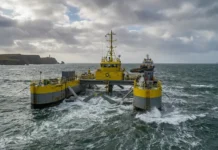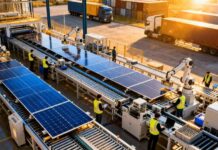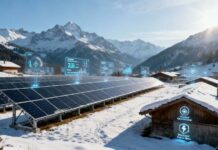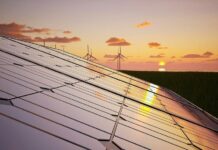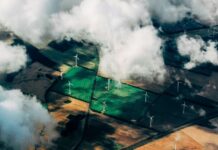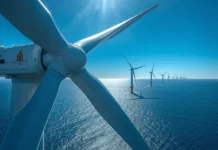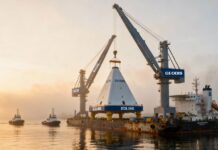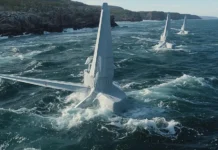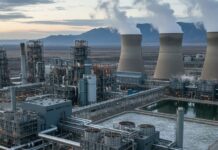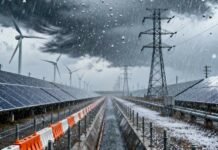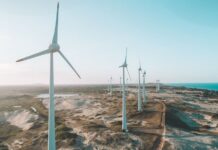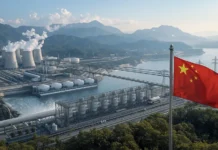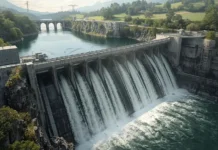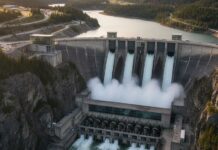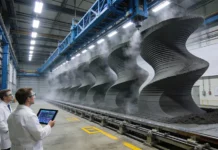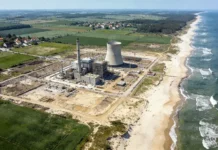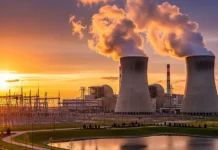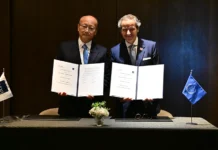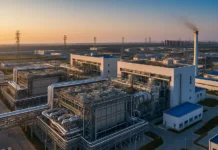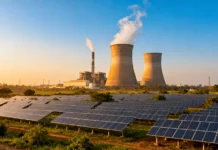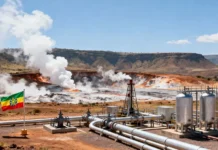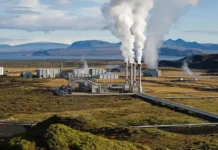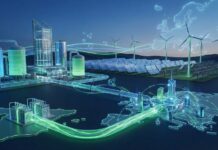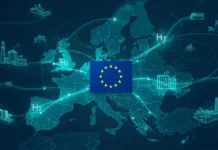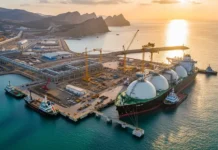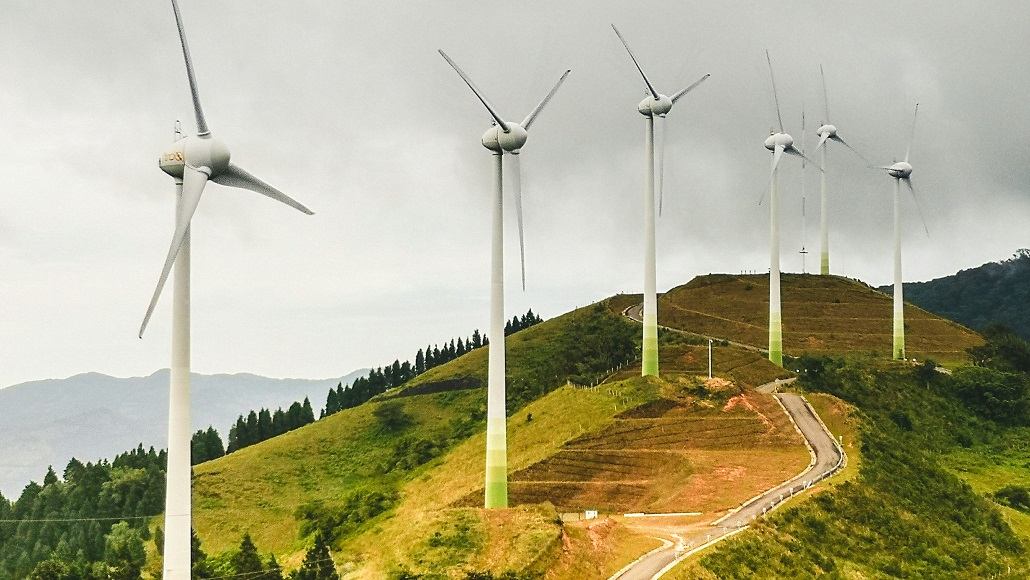The modern energy system depends on a range of energy resources as well as technologies. These energy resources have in them fuels in order to generate electricity and heat along with non-ferrous minerals like those that are required in energy technology components. As diversification happens to be a major force when it comes to strengthening the security of any energy system, the introduction of renewable energy sources in order to decrease heavy dependence on fossil fuels, which is the energy transition, has gone on to contribute not just to dipping greenhouse gas emissions but also to strengthening energy security.
Making sure of access to these fuels as well as technology components when it comes to electricity generation as well as transmission needs some very transparent and robust supply chains. As is, securing robust and transparent supply chains has also become synonymous with energy transition safeguarding.
It is well to be noted that the United States has been investing a lot when it comes to strengthening the country’s energy industrial base. In the recent decades gone by, the successive US administrations have evaluated the country’s energy-related supply chain resilience and have also taken up measures in order to address this susceptibility. For instance, the first Trump administration went on to issue the first federal strategy in order to strengthen crucial mineral supply chains, numerous executive orders that were related to supply chains for electric power components, along with actions like federal support issuance for mineral projects.
It is worth noting that the supply chain agenda continues to get its bipartisan support from the executive as well as the legislative branches. In the Biden administration, crucial minerals were a major focus when it came to wide-ranging vulnerability evaluation, which the White House took on the state of supply chain resilience as well as resultant actions.
Apparently, the second Trump administration has already sent signs for continued robust attention when it comes to availability as well as access to resources like uranium as well as critical minerals.
The fact is that supply chain security has already emerged as one of the top priorities for Washington because of its confluence of worldwide developments. Earlier in the last decade, increasing assertiveness by Beijing started raising a policy question when it came to the efficacy of depending on China for materials that were as important for energy and advanced technology as critical minerals. The effects when it came to COVID-19 on a worldwide economy started somewhere around spring of 2021, which highlighted the fragility of global clean energy supply chains when it comes to commodities, which are necessary for public health as well as energy resources.
Adding to these significant drivers was the Russia and Ukraine war in the spring of 2022. Let alone the security challenges, but even the economic plight that was faced by Ukraine as well as the other European economies highlights how energy supplies can even be weaponized in a major worldwide conflict and how energy security as well as economic security are closely interconnected.
The idea of securing the energy supply chain has gone on to gain geoeconomic drivers in recent times. The rising demand when it comes to energy, which is anticipated from running the underlying data centers along with artificial intelligence, in addition to the electrification trend for decarbonization, needs broadened modernization of electric power and also power plants.
Major elements of supply chain challenges along with existing bilateral cooperation
There are numerous energy resources as well as technologies for a clean energy economy that exhibit prominent susceptibility within their supply chain. Let’s discuss the top areas wherein any kind of inaction would have economic, energy security, as well as political consequences.
The components of clean technology and requisite minerals
Demand when it comes to clean energy technologies like solar power, along with electric vehicle batteries, has indeed been on a growing trajectory. One of the policy concerns is that their global clean energy supply chains have a prominent level of Chinese presence, where the country comprises at least 60% of their global production capacity.
Besides this, the expansion in terms of clean energy technologies is even expanding mineral demands since an energy system that is powered by clean energy technologies needs more minerals as compared to fossil fuel-based counterparts.
The types of mineral resources that are used in clean energy technologies also vary in terms of technology, but China mostly dominates their global clean supply chains, especially when it comes to mineral refining. Interestingly, the United States happens to be very much dependent on China for numerous critical minerals that are on its official list.
Although it is not mineral-rich, Japan is also a big partner when it comes to strengthening the critical mineral supply chain as an off-taker, a source when it comes to project finance, downstream manufacturing, and also a material research and development hub.
Apparently, both Japan and the European Union have been the founding partners under the US-Japan-EU trilateral conference when it comes to critical materials.
The trilateral conference, which was established due to rising prices of some rare earths as well as critical minerals in 2011, has gone on to advance the information exchange when it comes to research and development as well as policies, along with helping the successful pursuit of the WTO’s dispute settlement case in 2014, which was against export duties and quotas of China.
Besides this, Washington and Tokyo have gone on to reach an agreement in March 2023 that both countries will not levy export duties on critical minerals that they trade. This kind of sectorial trade agreement goes on to reflect not just the interest of Japan when it comes to accessing tax credits under the Inflation Reduction Act, but it also shows the US interest in terms of engaging with Japan in its friendshoring efforts. For instance, both Japan and South Korea are at present the only other major sources of EV battery cathode active materials outside of China. Apparently, China comprises 90% of the overall global capacity, while Japan and South Korea jointly account for the remaining 10%.
Both the countries cooperate by way of multilateral forums as well. Under the Mineral Security Partnership (MSP), which is initiated by the US, Japan is collaborating with a major Congolese entity when it comes to mineral development, which is tied to a G7-initiated corridor railway modernization project in Africa. Within the US-led Indo-Pacific economic framework for prosperity, going ahead and making clean energy supply chains diversified, transparent, and resilient is indeed a key objective of the supply chain pillar. Critical minerals as well as mining and energy in industries happen to be the two sectors that Washington has gone on to identify in terms of potential cooperation in an announcement that was made in August 2024.
Nuclear power technology, as well as fuels
Nuclear energy has been gaining a renewed sort of attention due to its non-carbon-emitting trait. At the COP28 climate meeting, which was held in Dubai in 2023, almost 30 countries pledged to work towards tripling their installed nuclear power generation capacity by 2050. In the United States, there is renewed interest in nuclear, both large and small, when it comes to the strong forecast as far as electrical demand from computational energy requirements of AI is concerned. But the domestic order book, which has been stagnant over several decades, has gone on to lead to certain supply chain challenges, like limited capacity when it comes to large-scale forging as well as fabrication. In contrast, countries such as Russia lead the world when it comes to exporting nuclear power reactors as well as enriched fuel, whereas China, on the other hand, is all set to rival the US when it comes to installed capacity of both domestic and civilian nuclear reactors by the end of this decade.
It is well to be noted that resilience when it comes to domestic clean energy supply chains as far as nuclear components are concerned affects not just the capacity to meet certain domestic requirements for reactor construction, but it also gives the opportunity to capture certain overseas markets. Although most of the global nuclear power plants happen to be based out of advanced economies, there is a rising interest among many global South countries, which at present do not have any kind of nuclear power generation program.
What is at stake over here is not just economics, as the nuclear commerce helps to maintain or expand the ties between technology suppliers as well as importer nations.
It is worth noting that nuclear energy has long been a major focus area when it comes to bilateral cooperation and involves national research and development institutions. Under the first Trump administration, the Japanese and US governments brought into place a commitment. The ongoing interest as well as investments within the US reactor projects, both in terms of public and private from Japanese utility and engineering companies, go on to demonstrate Japan’s significance as a very close partner. Japan has been contributing very actively to the US endeavors to promote small modular nuclear across the world, like the foundational infrastructure for responsible use of small modular reactor technology—the FIRST program.
The electric grid system
Apparently, the electric power system is yet another area of supply chain barriers. There is a growing electricity demand from both decarbonization and AI and data center operation purposes, which points to a very significant need for additional power supply. This means that a country will require more components like transformers as well as equipment such as switchgear along with transmission lines in the years to come. But the US capacity to meet this need is very severely constrained. There is a limited capacity when it comes to domestic production, which has rendered the replacement lead times when it comes to large power transformers to more than double between 2021 and 2024.
Besides this, our modern electricity system happens to be dependent on information and communication technology—ICT. Hence the risk when it comes to cyberattacks has become one of the major concerns. Cyber risks when it comes to electric power systems can crop up only from direct attacks that are aimed at the critical infrastructure. However, they can also come through exploitation of susceptibility within component supply chains, which include counterfeit insertion as well as malicious software insertion.
Apparently, the supply chain resilience when it comes to these components as well as infrastructure has gone on to become a national security concern, not just for the high import dependence that it has, but also for the dependence on Chinese imports. Meanwhile, on the other hand, Japan has significant expertise when it comes to material science and also happens to be a major supplier of critical materials like high-grade grain-oriented electrical steel, which is indeed a very key raw material when it comes to large power transformers. As far as the ICT supply chain front is concerned, Washington and Tokyo have been consulting very closely by way of the US-Japan dialogue when it comes to the digital economy.
What is the way forward?
Advancements when it comes to an objective that is as strategic as securing these kinds of clean energy supply chains happen to be the most effective if they are pursued in collaboration with countries that have a shared evaluation of the nature as well as the urgency of the challenge along with the technological and industrial upgrades to address them. The fact is that Japan happens to be a head above the rest. Cooperation when it comes to Japan is going to significantly elevate the interest of the US in order to secure these clean energy supply chains, given that both countries have really strong synergies.
The clean energy technology
Although clean energy does not enjoy a very high-level focus when it comes to the Trump administration, there are some of the technologies that continue to merit a robust government focus as they offer security along with decarbonization benefits. While the endeavors to reduce the dependence on China within supply chains, when it comes to established technologies, may continue to show their merit, Washington and Tokyo should also consider dedicating themselves to a sizeable share as far as the joint efforts towards clean energy technologies are concerned, which are in their early stage.
It is well to be noted that hydrogen fuel cells as well as electrolyzers are one such kind of category of technologies. Fuel cells can go on to offer a very dependable power supply coming from hydrogen on-site either for civilian or non-civil applications. In addition to this, electrolyzer technology is also key in terms of producing cleaner hydrogen by splitting water into oxygen and hydrogen. Especially the global supply chain in terms of proton exchange membrane (PEM)-based fuel cells along with electrolyzer technologies, which happen to be still in their very early stages. The PEM technology may as well be more intricate; however, they are more compatible along with intermittent renewables as compared to alkaline-based technologies in which China goes on to lead in global manufacturing capacity.
Because of their early stages, the policy support as well as industry actions are more likely to affect the PEM technology supply chains, which are more robust, diverse, and resilient, which, by the way, is lacking in other supply chains of today. It is worth noting that the US-Japan cooperation should also consider a platform in order to ensure that their innovation outcomes get successfully scaled up in terms of mass production and manufacturing within the West. Both the countries can also go ahead and engage with like-minded nations, like the European Union, in order to jointly formulate steps so as to nurture the technology supply chains, which are more resilient when it comes to the potential flow of components because of the overcapacity problems within China.
Critical minerals
It is well to be noted that the second Trump administration has gone on to signal a very prominent commitment when it comes to expanding the domestic capacity as far as mineral production is concerned. This is likely going to encompass a more broadened usage of federal financing tools, which includes engagement of resource-rich foreign nations. With a multilateral viewpoint, both Washington and Tokyo should continue with the leverage of their existing platforms like the Quadrilateral Security Dialogue (QUAD), the Mineral Security Partnership (MSP), and the International Energy Agency (IEA) so as to effectively bring into place sustainability, competitiveness, and also transparency when it comes to their global supply chains.
The fact is that such kind of potential was already evident since the Unleashing American Energy executive order, which directed the secretary of state to consider opportunities so as to advance the mining as well as processing of minerals in the United States by way of quadrilateral security dialogue. Besides this, Japan may also consider serving as the MSP chair in the years to come, while both countries can also guide the mineral security agenda by way of the IEA.
Bilaterally, the US may also consider collaborating with Japan in order to raise additional capital so as to support mineral production capacity development at home, which would in intern accord access to Japan in US mineral supplies when there are supply disruptions.
It is worth noting that nuclear energy happens to be among the domestic energy priorities as far as the Trump administration is concerned. Due to its continued expertise when it comes to large forging as well as fabrication, Japan would be a very natural ally to the United States since the US power sectors strive in order to meet the need for component supplies when it comes to refurbishing or even replacing large sectors. Meanwhile, on the other hand, the US developers of small modular reactors along with advanced reactors may find the engineering as well as construction partners. When it comes to the Japanese nuclear industry specifically, as the US vendors go on to eye the emerging nuclear markets, which have very limited local industrial capacity.
In addition to this, Washington may as well work closely with Japan when it comes to installing diversity along with robustness within the global supply chain as far as nuclear fuels are concerned. The potential measures may as well include investment by Japan in the US fuel production capacity, which includes high-assay, low-enriched uranium fuel, which is required in terms of advanced reactors in development. Such kind of engagement would mean more capital investment for the US effort as well as an alternate supply source in order to enhance the nuclear fuel supply security of Japan. The two governments must also consult on whether they must further leverage the Sapporo 5 framework.
Significantly, securing the grid system supply chain happens to be a very prominent task, not just to meet the future volumetric requirements but also to safeguard the modern electric network from getting exploited for susceptibility within technology components. Washington should go on to consider strategic collaborations with Tokyo as well as other production capacities, which happen to be geographically aligned.
For instance, the Japanese component supplies can very well help to fill the US supply gap since the US utilities look forward to meeting the demand when it comes to these grid components. There is another idea where the Japanese manufacturers can invest in the United States so as to speed up the supply chain resilience.
Apparently, since the Chinese components happen to be much cheaper as compared to their competitors, Washington may as well consider offering support such as Defense Production Act (DPA) authorities. As a matter of fact, while the usage of DPA when it comes to energy technology components as driven by the Biden administration was rescinded in March 2025, the use of DPA for transformers appears to have been left intact. The fact is that Washington as well as Tokyo must explore paths in terms of closer supply chains and engagement in terms of critical electric components, like transformers.



